#holland baroque
Text
Holland Baroque & Bastarda Trio „Minne”
Holland Baroque & Bastarda Trio „Minne”
Pentatone, 2022
Holland Baroque i Bastarda Trio. Dwa znakomite zespoły, które łączy oryginalność (i osoba Tomasza Pokrzywińskiego, będącego członkiem obu grup) oraz otwartość artystycznych poszukiwań, zaprezentowały album inspirowany dziełami Hadewijch z Brabantu.
Poza średniowieczną mistyczką, w programie płyty przywołani są inni twórcy: Giovanni Pierluigi da Palestrina, Heinrich Isaac,…

View On WordPress
#Bastarda#Giovanni Pierluigi da Palestrina#Hadewijch z Brabantu#Heinrich Isaac#Hildegarda z Bingen#Holland Baroque#Judith Steenbrink#Melchior Franck#Michał Górczyński#Paweł Szamburski#Tomasz Pokrzywiński
0 notes
Text
WEEK 12


0 notes
Text
Mi crítica del concierto de Holland Baroque esta noche en el Espacio Turina.
#hollnad baroque#tineke steenbrink#benedictus à sancto josepho#carl rosier#jan baptist verrijt#herman hollanders#música#music
0 notes
Text


CATHERINE'S STYLE FILES - 2023
14 NOVEMBER 2023 || The Princess of Wales attended the Shaping Us National Symposium reception at the Design Museum in London
Catherine opted for -
↬ 'Cady' Single-Breasted Stretch Blazer in 'Burgundy' by Roland Mouret
↬ 'Axon' Side Zip Wide Leg Pants in 'Burgundy' by Roland Mouret
↬ 'Cupro' White Shirt Bodysuit by Holland Cooper
↬ Chunky Knot Baroque Pearl Earrings by Shyla London
↬ 'Gianvito 105' Pumps in 'Royale Burgundy' Suede by Gianvito Rossi
#catherines style files#style files 2023#roland mouret.#holland cooper.#gianvito rossi.#shyla london.#british royal family#british royals#royalty#royals#brf#royal#kate middleton#catherine middleton#duchess of cambridge#british royalty#royal fashion#fashion#style#14112023#ShapingUsSymposiumReception23#chunky knot earrings#chunky knot earrings.#mine.#the princess of wales#princess of wales#princess catherine#princess kate
41 notes
·
View notes
Text
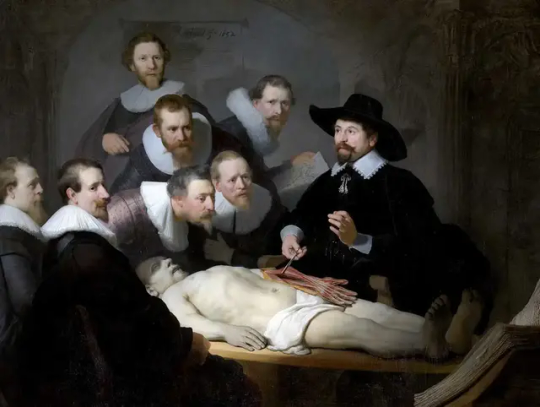
Rembrandt van Rijn (Dutch, 1606-1669) • The Anatomy Lesson of Dr. Nicolaes Tulp • 1632 • The Hague, Netherlands
Italian and Spanish Baroque art was largely religious and mythological. The northern Baroque painters of Holland and Germany, however, tended toward scenes of daily life and portraits. Their art was secular due to Prostistanism, which prohibited the veneration of religious images.
Rembrandt van Rijn was one of the most celebrated artists of the Dutch Baroque. His masterful treatment of light and shadow earned him great respect as a painter. He received many commissions from organizations who requested group portraits of its members. Rembrandt’s remarkable sense of composition allowed him to arrange multiple figures without compromising any subject's visibility.
The painting The Anatomy Lesson of Dr. Nicolaes Tulp was commissioned by the Amsterdam Guild of Surgeons. The archives preserved the names of every person in the painting, even that of the dead man depicted being dissected by Doctor Tulp. The man, Aris Kindt, was a criminal sentenced to death for armed robbery. It was common for authorities to relinquish the bodies of deceased criminals to medical students and it mostly took place in fall and winter to avoid rapid decay.
#art#painting#fine art#art history#art history lesson#rembrandt#dutch baroque#dutch master#dutch golden age#oil painting#famous paintings#the hague#pagan sphinx art blog#art blogs on tumblr#art education#art blog
16 notes
·
View notes
Text
Varney the Vampire: Chapter 11
Chapter 10: A wild Charles Holland appears!
A brief unexpected hiatus there for a week or so. Onward!
If you're just joining us, an ancestral vampyre has been victimizing fair maiden Flora Bannerworth, and it is the worst thing that has ever happened to her brothers Henry and George. Truly, nothing could be worse than having a sister bitten by a vampyre; let us mope upon it in the family crypt with some friends. The friends have matches. Meanwhile, Flora just shot the motherfucker.
CHAPTER XI.
THE COMMUNICATION TO THE LOVER. -- THE HEART'S DESPAIR.
As I've said, you can summarize Varney the Vampire very concisely if you really want to. In this chapter, Henry takes Flora's newly-returned kinda-fiancé aside and explains him a thing. Less concisely: That thing is a vampyre, one Ancestor von Spookyportrait, who keeps preying on Flora and repeatedly getting his hapless ass shot for it. But what you have to understand is, there is not a goddamn thing about Varney the Vampire that is concise. I would even argue that the spirit of verbosity—the baroque grammatical vibe, if you will—is more the point of this godforsaken thing than the actual plot is.
Consternation is sympathetic, and any one who had looked upon the features of Charles Holland, now that he was seated with Henry Bannerworth, in expectation of a communication which his fears told him was to blast all the dearest and most fondly cherished hopes for ever, would scarcely have recognised in him the same young man who, one short hour before, had knocked so loudly, and so full of joyful hope and expectation, at the door of the hall.
I myself am long-winded. Game recognizes game.
It would be one thing, Charles Holland thinks to himself, if Flora were just a trifling-ass strumpet. At least then he could get mad about it, his pride would shield him—but no, he is convinced that his angelic maiden fair back there is trying to protect him from something. As he should be, because it's not like it was hard to tell or anything.
Happier would it at that time have been to Charles Holland had she acted capriciously towards him, and convinced him that his true heart's devotion had been cast at the feet of one unworthy of so really noble a gift.
James Malcolm Rymer really builds up what a sterling hero—verily, a textbook cinnamon roll—Charles Holland is. At first you might think Charles Holland is his cherished self-insert, or maybe Rymer is even a little in love with him, as perhaps all writers should be with our own characters. But if I remember correctly, there's a more interesting reason he does this. But I get ahead of myself (my favorite thing to do).
But now he was to hear all. Henry had promised to tell him, and as he looked into his pale, but handsomely intellectual face, he half dreaded the disclosure he yet panted to hear.
Okay, “panting,” Rymer, don't be weird about it. Also, please use some names in this paragraph; I am pretty sure that Charles Holland is the Pale But Handsome one, which renders this "he" salad nonsensical.
Charles Holland begs to be told the truth! Henry avers that he will tell it, no matter how dubious or strange! Speak truly, Charles Holland, did you indeed hear Flora breaking up with you two pages ago? Why, yes, of course I did, Henry, I did! Then you will be shocked my sister broke up with you! Forsooth, I am! You know who actually wrote this? I've figured it out—energy vampire Colin Robinson.
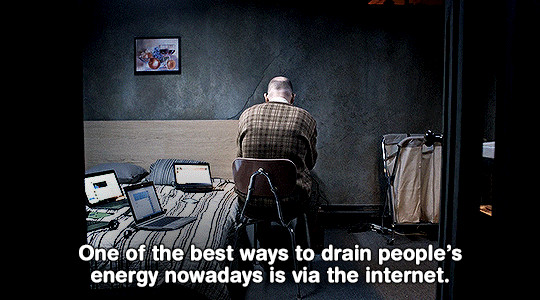
Because just the act of describing this is sucking my will to live, and I'm not even sure why. Like, it's fine? It's not terribly onerous to read? It's just... so... it feels so much like long covid fatigue, I can't even tell you. NO! We can do this!
"She was right. She is a noble-hearted girl for uttering those words. A dreadful incident in our family has occurred, which might well induce you to pause before uniting your fate with that of any member of it."
Hold onto that "don't unite your fate with ours" thought, because it's an ugly one and we'll get to it. Right now, Charles Holland declares that nothing can ever change his feelings for Flora, ain't no mountain high enough, so on and so forth. What change of fortune could have occurred for Henry to think so?
"I will tell you, Holland. In all your travels, and in all your reading, did you ever come across anything about vampyres?"
Ah, shit, here we go.
"You may well doubt the evidence of your own ears, Charles Holland, and wish me to repeat what I said several more times. I say, do you know anything about vampyres?"

They go back and forth a while about the shocking fact of believing such a shocking fact, but finally, Henry has processed his circumstances: he, Henry von Spookyportrait Beaumont Bannerworth III, is experiencing the worst thing humanity has ever endured:
"Listen to me, and do not interrupt me. You shall know all, and you shall know it circumstantially."
Henry then related to the astonished Charles Holland all that had occurred, from the first alarm of Flora, up to that period when he, Holland, caught her in his arms as she was about to leave the room.
I am fucking shocked that Rymer did not have Henry recap this at actual length. "And approximately four to five people also saw all of this!" And Rymer does not have all of those people file in and give sworn testimony in real time. Like, that's surely an entire mortgage payment he just passed up, or else he got into a fistfight with his publisher and lost.
"You bewilder me, utterly," said Charles Holland.
"As we are all bewildered."
"But -- but, gracious Heaven! it cannot be."
"It is."
"No -- no. There is -- there must be yet some dreadful mistake."
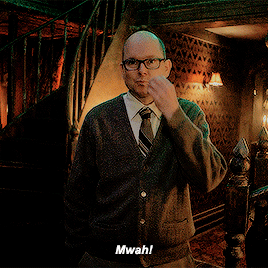
"No, no! By Heaven, no!"
"Yes, Charles. Reflect upon the consequences now of a union with such a family."
Wait, Henry, what the fuck do you mean by that?
"That one who has been visited by a vampyre, and whose blood has formed a horrible repast for such a being, becomes, after death, one of the dreadful race, and visits others in the same way."
Two points:
What are the Vampire Rules in Varney the Vampire? We now know that it only takes (one?) bite to infect someone with vampirism—no exchange of vampire blood is needed. Allegedly. Rymer will probably forget about this.
"Dreadful race" is a real interesting word to use about something that is supernaturally contagious rather than hereditary. On the other hand, Rymer's been implying that Varney is Flora's ancestor, hasn't he? The shame of vampirism is in both her bloodline and, now, her actual blood.
At the same time, here comes the ugly thought to unpack. [Content note: mental health ableism, undescribed self harm and suicide in fiction, racism. If you'd like to skip this very long section, scroll down/search for "Charles Holland is a man of action."]
For decades if not centuries (and, I would argue, still today as well), there have been persistent ideas that mental health issues 1) inevitably led to violence and chaos; 2) were inevitably hereditary; and 3) weren't exclusive to "impure" bloodlines, but, short version: "savagery," colonialism, racism. And all this coalesces into the idea of the Family Stain. In a book like Jane Eyre, published the same year as the collected Varney, Charlotte Brontë evokes a family who "tricks" Rochester into marrying a woman coded as biracial who has apparently inherited a family mental illness. In this character, Charlotte Brontë chooses to identify insanity with violence (and, implicitly, with race), to the point that imprisoning Bertha in an attic is presented as "merciful." And honestly, given the state of mental healthcare up through the 20th century, given the real-life prevalence of this identification, it probably was. This is the cultural foundation beneath Henry's warning of "the consequences of such a union."
But let's delve deeper into the word "consequences." There's also a Louisa May Alcott serial from her "blood and thunder" days called "A Nurse's Story" (1865), and while it was published twenty years after Varney the Vampire, it makes those assumed consequences explicit: point #2 above, the inevitable "curse" of mental illness spreading to a patient's children. (I want to stop here and tell you that I'm bipolar. Medicated, very stable, not cursed. I've been very open about this for many years. I want you to read this paragraph knowing that I personally know that what follows is bullshit.) The story's narrator, Kate Snow, is hired to be the caretaker for a young woman who has started to present symptoms of the Family Stain, hereditary insanity, and has begun to self-harm as a result. By the end of the story, Elinor has actually died by suicide; I won't even go into the details because the story (dangerously) portrays her death as a tragic but noble act.
Elinor also has two older brothers who have sworn to die single (one has become a priest; the other is self-medicating with unspecified substance abuse, probably alcohol), so that they don't pass the family illness to any children. Unfortunately, there is a fourth sibling, Amy, who is determined to keep the secret and marry. (She dies within two years of her wedding, reports the epilogue.) Even better, there's a second family stain—the siblings are all actually illegitimate, because their father has a living first wife that he abandoned! And his son from that marriage, when not busy blackmailing the family, falling in love with Kate, and twirling his mustache, will also develop the hereditary insanity!
I'll be real with you, I actually love this story. It's got the psychological screw-turns that make a lot of Alcott's Very Problematic guilty pleasure stories so engaging, and (aside from the ableist premise rotting there at the core), the characters are portrayed with compassion. Kate stays with the family, villainous legitimate son included, as a loyal friend; the initial setup with Elinor was apparently based on Alcott's own experiences as a nurse/companion, and she has a great deal more sympathy for her characters than a lot of gothic-leaning writers. What "A Nurse's Story" illustrates for us, though, is how concretely mental illness was viewed as a family stain on the level of an original sin, something no one will ever escape, that will make even the kindest people erupt in violence, and something that must be prevented from propagating at all costs.
Like I said, though: I'm bipolar. I of all people know that these tropes are bullshit, and dangerous bullshit at that. I still love this story. Jane Eyre is one of my favorite books. We contain multitudes; we just also have to critique those multitudes. That's why I'm here writing thousands of words about this absurd vampire serial in the first place.
Now: let's take those ideas and jump back over to Varney:
"There may be insanity in this family," thought Charles, with such an exquisite pang of misery that he groaned aloud.
There may be insanity in this family, thought the potential father of Flora's children.
"Already," added Henry, mournfully, "already the blighting influence of the dreadful tale is upon you, Charles. Oh, let me add my advice to Flora's entreaties. She loves you, and we all esteem you; fly, then, from us, and leave us to encounter our miseries alone. Fly from us, Charles Holland, and take with you our best wishes for happiness which you cannot know here."
"Never," cried Charles; "I devote my existence to Flora. I will not play the coward, and fly from one whom I love, on such grounds. I devote my life to her."
You're probably wondering why I brought racism up as well, ten million words ago. Well, because I think Rymer has given us visual cues as to why the noble Charles Holland is right to remain loyal to Flora. She's been coded as immune to any kind of metaphorical "stain," whether she's covered in blood or not. Look back at the very first chapter:
Now she moves, and one shoulder is entirely visible -- whiter, fairer than the spotless clothing of the bed on which she lies, is the smooth skin of that fair creature
Rymer intends us to understand Flora is intrinsically worthy of her fiancé's devotion: she is as white as the spotless bedlinen that she's being fetishized on. And I wish this were only a visual metaphor using the color spectrum of electromagnetic light, but I think we all know that the Victorians were racist as fuck. Readers of 1847 would have understood, consciously or not, the assurance of Flora's "fairness" that way. She's whiter than white; she might die nobly, but Charles Holland won't have to stuff her in the attic.
What I want to critique in this serial, to separate out, is to what extent Flora is presented as a heroine because of her whiteness, and to what extent that comes from her actions, such as shooting a vampire while everyone else is moping around a crypt. I think it could be incredibly useful to identify this, especially if you yourself are a writer, and infinitely more so if you are (like me) a white writer, to study what kind of bullshit you want to avoid in your work. (For that matter, ableism is another form of bullshit to to examine and avoid.) I'm going to be honest with you, writing about Twilight taught me more about characterization than any of the dozen writing classes I ever took, because I sat down on Livejournal and observed every single thing that I thought made Bella Swan annoying as hell, or Edward Cullen creepy as fuck (what I should have observed more: the werewolf "lore" being destructively racist), and I made mental notes: Do the Opposite of That. Now that I've found myself here in the middle of these tropes, that's what we're going to do. And if anyone ever adapts this for television, I would recommend that they cast Flora as a different race, but with the exact same "gentle maiden" personality, and portray a purity and sweetness that have nothing to do with skin color, no matter what Hunger Games fans thought.
But back to the story. Charles Holland is a man of action. Charles Holland has plans.
"Look you here, Henry: until I am convinced that some things have happened which it is totally impossible could happen by any human means whatever, I will not ascribe them to supernatural influence."
"But what human means, Charles, could produce what I have now narrated to you?"
"I do not know, just at present, but I will give the subject the most attentive consideration. Will you accommodate me here for a time?"
-- He is going to converse with Flora upon the subject
-- He will say nothing to add to her fears thereunto
-- He will touch base re: a paradigm shift with Henry's brother George, Mr. Marchdale, and Mr. Dr. Chillingworth to move the needle on some core competencies
-- He will tell Henry to buck up, until yea, Henry does rejoice in his command of executive function
And Charles Holland is able to do all this because Henry unwittingly Said A Thing: if there's "such a weight of evidence in favour of a belief in the existence of vampyres" that they are compelled to believe in their local ancestral vampyre, CHILLINGWORTH—then that means they can catch it. "It consists," not to put too fine a point on it, "of a revivified corpse," and in that case, Charles Holland would like a motherfucker to try it:
"By Heaven! if ever I catch a glimpse of any such thing, it shall drag me to its home, be that where it may, or I will make it prisoner."
FROM THE DESK OF CHARLES HOLLAND - ACTIONABLE ITEMS
-- The squad will take turns watching over Flora
-- All intrepid protectors will be ready to defend her, potentially with swords and/or crowbars
-- They will have the means of alerting the entire household to any unregulated vampyring
-- There will be a healthy and well-balanced schedule to make sure no one is overly deprived of sleep
-- He's gonna have a roster and everything
-- Forsooth, where is the coffee pot
Meanwhile, Henry's like, oh thank God, someone who knows what he's doing. When Charles Holland says he wants to sleep in the Vampyre Room, in hopes that maybe Sir Ancestor actually will drop by again, Henry is more than happy to show him right in.
I don't think Rymer meant this to sound as creepy as it does, but blowing up the word count by iterating over and over that Charles Holland wants to sleep in Flora's room, exactly the way she left it, with nothing removed, for reasons of his own, results in an unintended (unless...?) ick factor. Spoiler: The reason ends up being, to look at the Von Spookyportrait likeness. That's all. Probably.
In theory, Varney recaps go up on Fridays. I'd like to have the next one up before Dracula Daily kicks off again on May 5th. Send thoughts and vamprayers to me.
Varney the Vampire masterpost
#varney the vampire#gifs#content notes:#mental health#ableism#racism#self harm cw#suicide cw#victorian bullshit#vampire studies
45 notes
·
View notes
Text
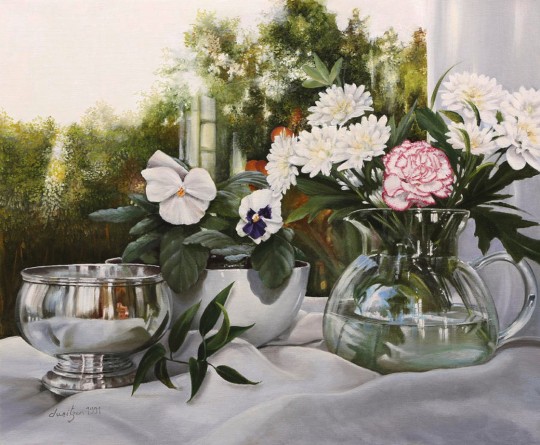
Garofano E Argento
Danka Weitzen
Born in Lodz (Poland) to a Polish father and an Italian mother, with her family Danka moved to Turin when she was a still child. They lived in the Palazzo Reale, and in the same city, she attended the Accademia Albertina Art Institute. Soon after graduation in 1969, she showcased her works at Ars Plauda Gallery in Turin and since then she has had exhibits throughout Italy and extensively around the world: Bulgaria, Costa Rica, Egypt, Ethiopia, France, Germany, Holland, Kenya, Malta, Poland, Portugal, Rumania, Spain, Switzerland, and all over the US.
Her inspiration is Caravaggio, but she has also a soft spot for Artemisia Gentileschi, an early Italian Baroque painter, who broke the female artist barrier by becoming the first female member of the Accademia di Arte del Disegno.
Other painter's works: https://1-danka-weitzen.pixels.com/
#dianthus#carnation#violas#chrysanthemum#still life#flowers#painting#women in art#woman painter#Danka Weitzen#hyperrealism#20th century painting#20th century art
5 notes
·
View notes
Text



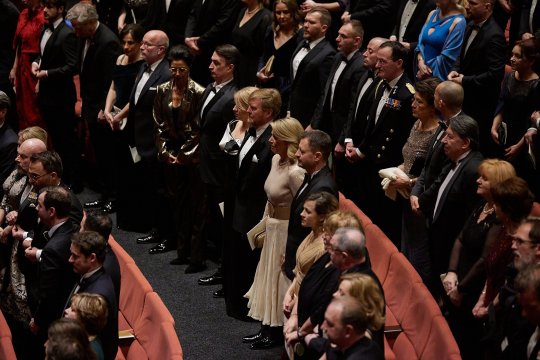
Dutch State Visit to Slovak Republic - Day 2
As a thank you for the hospitality, the Royal Couple is offering President Čaputová a concert by trumpeter Eric Vloeimans with Juan Pablo Dobal, Tuur Florizoone and Holland Baroque. March 8, 2023.
📷 Royal House of The Netherlands
28 notes
·
View notes
Photo
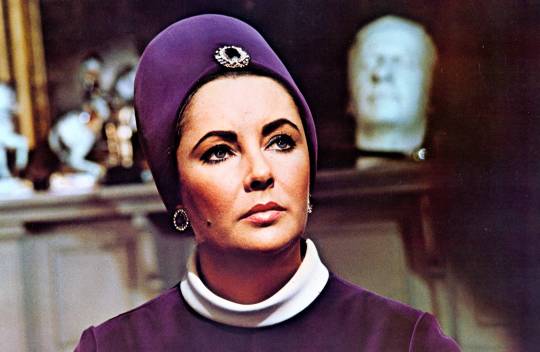
Prepare to be comprehensively freaked-out this April when the free monthly Lobotomy Room film club (our motto: Bad Movies for Bad People) presents the peculiar London-set late 1968 psychodrama Secret Ceremony! It's precisely the type of film John Waters would describe as a “failed art movie” – but that’s one of my favourite genres, and if you’re going to make a failed art movie, make it this wildly baroque, inscrutable and claustrophobic!
Screen diva Elizabeth Taylor (costumed by Dior and coiffed by Alexandre de Paris) stars as Leonara, a blowsy middle-aged prostitute tormented by the death of her young daughter by drowning. One day profoundly disturbed poor little rich girl Cenci (post-Rosemary’s Baby Mia Farrow at her most waif-like) latches onto her, decides Leonara represents the return of her recently deceased mother and drags her back to her haunted art nouveau mansion in Holland Park. Once installed there, Leonora soon clashes with Albert (Robert Mitchum), Cenci’s sexually predatory stepfather. From there things just get progressively more twisted … (To put Secret Ceremony into context: the same year, Taylor and director Joseph Losey collaborated on the even more berserk Boom! (1968), the flop film based on a Tennessee Williams play - another movie I love!).
So, won’t you join us to watch Secret Ceremony downstairs in the glittering surroundings of Fontaine’s bar in Dalston on Thursday 20 April 2023? Perhaps the £6 cocktail menu will help make Secret Ceremony more comprehensible! Numbers are limited, so reserving in advance via Fontaine’s website is essential. Alternatively, phone 07718000546 or email [email protected] to avoid disappointment! The film starts at 8:30 pm. Doors to the basement Bamboo Lounge open at 8:00 pm. To ensure everyone is seated and cocktails are ordered on time, please arrive by 8:15 pm at the latest. Facebook event page.
#secret ceremony#elizabeth taylor#cult cinema#boom!#lobotomy room#lobotomy room film club#dalston#fontaine's bar#film club#psychodrama#cult movie#bad movies we love#bad movies for bad people#mia farrow#Robert Mitchum
19 notes
·
View notes
Text
321: The The // Soul Mining
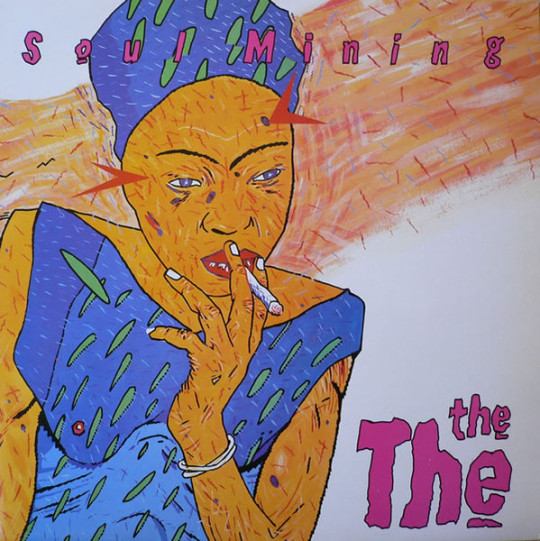
Soul Mining
The The
1983, Epic
I’d hazard Soul Mining is the only The The album most people have heard and, while it amply demonstrates definite article Matt Johnson’s capacity for genuine brilliance, I think that’s generally fine. The others have their interest, but Soul Mining is the only time Johnson consistently limits his compulsion to wallow in baroque self-loathing to the lyrical arena. Though the words frequently sound like the prequel to My Twisted World: The Story of Elliot Rodger (“You’ve been a ‘PROSTITUTE TO HUMILITY’ / She’s invaded your life and you’ve got to live apart / In order to SURVIVE”), the music has an irrepressible vibrancy to it, its cutting-edge for ’83 electronic beats garlanded with unexpected touches of accordion, fiddle, xylimba and more. It’s the juxtaposition that gives Soul Mining its immense charm, the fact that its form and content frequently don’t align, the sense of a man working on music for people to dance and make love to despite his brain’s persistent efforts to eat itself alive.
youtube
Soul Mining is defined by its singles, “This is the Day” and “Uncertain Smile,” two of the greatest of the ‘80s, of all time in fact. “This is the Day” is about nothing less than those hinge points in life where something inside you shifts, and you know that things are going to be different, even if the full ramifications of that change may take years to come into focus—a song of such tender empathy that just listening to it can be enough to bring one of those shifts on from the deep place it lay, waiting for a sign. “Uncertain Smile” also places its finger directly on an ineffable, almost inexpressible sensation, the uncertain moment when an emotional block inside has begun to thaw, and a feeling that’s been absent so long you’ve forgotten its name returns. The album version climaxes with a bravura piano solo from former Squeeze Jools Holland that would get my vote for the instrument’s finest moment on a pop song.
Of the rest, the song that comes closest to these peaks is the near-ten-minute closer “Giant,” a simmering 12”-single style head-nodder that rides one nasty bass synth lick, gradually layering on tricky, interlocking analog and synth rhythms. Johnson famously didn’t have a sequencer at the time, meaning he played a lot of the album’s “loops” manually, and the hands-on approach means he’s constantly switching up his patterns in a way you don’t always consciously register. Two-thirds of the way through he drops everything out for a while to let former Orange Juice drummer Zeke Manyika take an extended drum solo—when he finally brings everything back up a few minutes later I want to throw shit around I’m so hyped. Johnson intended it to close the record, but much to his ire international versions of the record (like my Canadian pressing) tack on contemporaneous single “Perfect.” A pop gem somewhat in the vein of “This is the Day,” it makes for an amazing cooldown from the last few tracks of clattering psychic angst, and the album’s lesser without it—it’s one of Johnson’s best.
321/365
#the the#matt johnson#this is the day#uncertain smile#jools holland#'80s music#art pop#synth pop#post punk#new wave#electronic music#vinyl record#music review#zeke manyika
3 notes
·
View notes
Photo
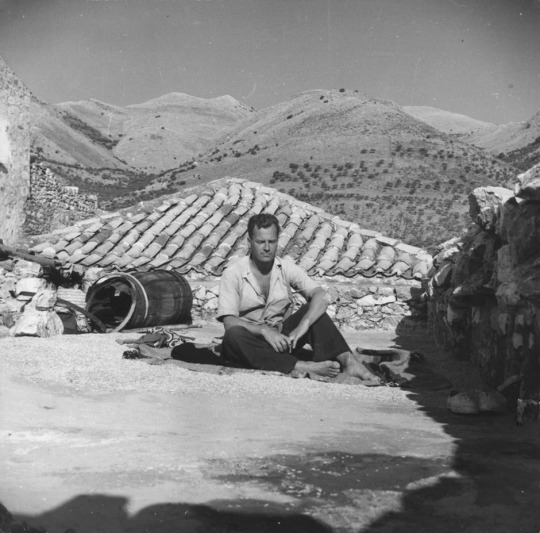
Like Venice, Château d'Yquem or a Rolls-Royce of the 1930s, he really was beyond competition.
- Jan Morris on Sir Patrick Leigh Fermor DSO
In 1933, at a mere 18 years old, Paddy Fermor decided to walk from Holland to Turkey and thus began his journey to literary fame and distinction as one of the 20th Century’s best travel and prose stylist.
His personality united not only scholar and daredevil - following in the spiritual footsteps of Victorian explorers such as Livingstone, Speke, and Burton - but also different periods of British history. As the tough, courageous commando who led the Cretan resistance and spirited a German general from Crete to Egypt during World War II, he operated in gritty, twentieth-century T. E. Lawrence-Ian Fleming terrain. And as a lifelong lover and scholar of Greek culture and language he inherited the mantle of Lord Byron, the Greeks' favourite Brit, after whom it seems that every town square in Greece is named.
Paddy was the architect of his own learning; his higher education was life itself. His own formal education came to an abrupt end when he managed to get thrown out of The King's School in Canterbury for publicly displaying affection for a local merchant's daughter, as well as for generally exhibiting, in the words of his headmaster, “a dangerous mixture of sophistication and recklessness."
This was an ideal formula for thriving in the high society of interwar London, evoked in the novels of writers such as Evelyn Waugh and Ronald Firbank. But Paddy, who had profound but vague ambitions, needed more than casual affairs and drunken orgies. He languished, a hungover and idle would-be writer, vaguely hoping to hit on something to write about, until inspiration struck: he would walk across Europe. It would be an adventure, a distraction, and useful research, all at once.
His parents financed the travels, mailing pound notes in envelopes to post offices and postes restantes across Central Europe from Holland to Bulgaria (not a single one was ever lost or missing). His walk became the stuff of legend. Paddy's gap year was the first year of the Nazis and the last of the gnarled, romantic old Germany whose spirit still lingered in the late middle ages. A Time of Gifts (1977) and Between the Woods and the Water (1985) were instant classics, celebrated for their evocation of a Central European world that had utterly vanished and their baroque language.
#jan morris#morris#quote#paddy leigh fermor#leigh fermor#patricl leigh fermor#english#travel#traveller#explorer#writer#europe#greece
38 notes
·
View notes
Text
The baroque laws of Fair Folk hospitality once again awaken me from dreamless, deathless slumber to spit spiritual effluvium across the wretched corpse of the internet.
(I also appreciate that like a lot of these "put your music on shuffle" tag games, I've used Spotify so infrequently over the past year that the algorithm doesn't know how to extrapolate data from incomplete results. A couple of these songs are wholly unfamiliar to me.)
Tagged by: @sailormctits
Rules: Shuffle your 'on repeat' playlist and post the first ten tracks, then tag ten people.
Tagging: As usual, nobody. If you see this, consider yourself tagged; I'm a Tumblr blog, not a cop.
2 notes
·
View notes
Text
Explaining one of VTMB paintings (pt 8)
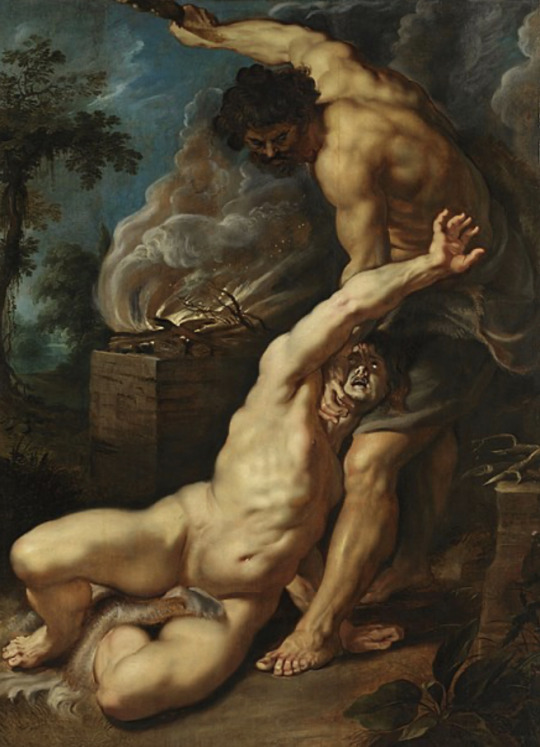
Cain Slaying his Brother Abel (Genesis 4:2-12) oil on oak wood (between 1608 and 1609) by Sir Peter Paul Rubens.
Sir Peter Paul Rubens (28 June 1577 – 30 May 1640) was a Flemish artist and diplomat from the Duchy of Brabant in the Southern Netherlands (modern-day Belgium). He is considered the most influential artist of the Flemish Baroque tradition. Rubens's highly charged compositions reference erudite aspects of classical and Christian history. His unique and immensely popular Baroque style emphasized movement, color, and sensuality, which followed the immediate, dramatic artistic style promoted in the Counter-Reformation. Rubens was a painter producing altarpieces, portraits, landscapes, and history paintings of mythological and allegorical subjects. He was also a prolific designer of cartoons for the Flemish tapestry workshops and of frontispieces for the publishers in Antwerp.[1]
The story of Baroque art in Flanders during the 17th century reflects the gradual decline of the country itself. Occupying the southern part of the Low Countries or Netherlands, it was ruled - along with the northern part of the Low Countries, known as Holland - by the unpopular Spanish Hapsburgs, who had taken over from the French Dukes of Burgundy. Its once powerful commercial and cultural centers, such as Bruges, Ghent and Antwerp, were weakened by religious and political disputes between the Catholic Hapsburg authorities and Protestant Dutch merchants. Thus while Dutch Baroque art flourished as never before, art in Flanders depended on a small handful of Flemish painters, mostly active in Antwerp.During the 15th century - the early days of the Italian Renaissance - Flemish painters had exported the technique of oil painting to artists in Florence, Rome and Venice. Now, at the beginning of the 17th century, with the spread of Italian Caravaggism, Flemish painters combined their own tradition with the tenebrist tradition arriving from Italy. This development was exemplified by the Antwerp artist Rubens (1577-1640). Since the High Renaissance, Flemish painting had been in transition between Northern and Italian influences; it was Peter Paul Rubens (1577-1640) who made the first real attempt to digest, absorb and fuse the two schools, creating a new style, well-suited to the more devout religious paintings called for by the Council of Trent's guidelines on Catholic Counter-Reformation Art (c.1560-1700), and which had a powerful impact on all painting north of the Alps.[2]
Below is an explanation of the Cain and Able story from real life and in the context of VTM. This is the same for all the Explained Cain slaying Able paintings in VTMB posts I’ve done so feel free to skip if you’ve already read this as it’s long.
___________________________________________________________
The tale of Cain murdering his brother Able are nearly identical in Jewish, Christian and Islamic texts with the oldest known version coming from the Dead Sea Scroll from the first century BCE. Cain was the the first born son of Adam and Eve and became a Farmer while Able was the second born son and became a shepherd. Both brothers made sacrifices to God, but God favored Abel's sacrifice instead of Cain's. In Islam the reason for their offerings is to decide which brother would marry Adam and Even’s first daughter who was also Cain’s twin sister. Able also had a twin sister and Adam wanted the brothers to marry the others twin. In multiple religions each brother has a twin sister but there is no consistently with the names as Cain’s twin sister being named Aclima, Kalmana, Lusia, Cainan, Luluwa, or Awan, and Able’s twin sister is named Jumella, Balbira or to make it more confusing Aclima (though even when she is called this Able’s twin sister is never the one the brothers are competing to marry) depending on the source. In the Islamic text Able’s offers his fattest sheep while Cain offered only a bunch of grass and some worthless seeds. In Jewish and Christian texts the reason for the sacrifices and the exact nature of their offerings are merely described as the first born of Ables heard and products from Cain’s fields.[3] The most description we get is in Genesis when God sees that Cain is upset that his offering was not chosen God tells Cain “: Why are you angry? Why are you dejected? If you act rightly, you will be accepted; but if not, sin lies in wait at the door: its urge is for you, yet you can rule over it.”(Genesis 4:6-7) Cain then told Able to meet him in his fields where he then murdered his brother out of jealousy by hitting Abel in the head with a stone. When God asks Cain where his brother Cain, “I do not know! he answered. Am I my brother’s keeper?”(Genesis 4:9) to which God replies “What have you done! The voice of your brother’s blood is calling to me from the ground. From now on you’ll get nothing but curses from this ground; you’ll be driven from this ground that has opened its arms to receive the blood of your murdered brother. You’ll farm this ground, but it will no longer give you its best. You’ll be a homeless wanderer on Earth.” (Genesis 4:10-12) When Cain objects saying the punishment is to great and that whoever finds him wandering shall kill him which then God says “No. Anyone who kills Cain will pay for it seven times over.” God put a mark on Cain to protect him so that no one who met him would kill him.” (Genesis 4:15). Cain then leaves east of Eden to wander in No-Mans-Land with his wife (who is not named in Genesis but is assumed to be his Twin sister in all tellings regardless of what name is given to her). Their first born Child was named Enoch, and Cain named the first city he built after his son. After Abel’s Death Adam and Eve had a Third son named Seth and when eve gave birth to him Eve said “God has given me another child in place of Abel whom Cain killed.”Genisis 4:25-26. In some texts Seths wife and sister is named Azura. Their son is named Enosh it is through Seth’s line that humanity stems from, though both Cain and Seth had multiple decedents and confusingly used the same names (see family tree below). None of Cain’s decedents suffered the curse of their father Cain but where still seen as sinful and apart from God and where killed in the great flood. How Cain died is not as an agreed upon topic. He was ether crushed to death by the stone house he built, an irony as he used a stone to slay his brother or in some versions part of the Mark of Cain had him grow horns and his descendent Lamech (not to be confused with Lamech who decedent from Seth and was the father of Noah) who was a blacksmith and had two wives(this is viewed as sinful) killed him mistaking him for a wild animal and killed his own son Tubal-cain in the process.

While in the lore of Vampire the Masquerade the tale of Cain killing his brother able as told in the Book of Nod stick to the original tale regarding the murder of Able but starts to differ in God’s punishment. "Father" cursed him with a mark, and cast him out to wander in darkness in the Land of Nod alone. There is no mention of a wife or if he was still cursed to be unable to farm however it is clear that Cain was not yet cursed to be a vampire by God. The Land of Nod was a place of utter darkness, with no source of light, where Caine was afraid and alone. There he found Lilith where they began a relationship and Cain realized that she possessed magical power and begged her to share them with him. While hesitant Lilith prepares an Awakening ceremony by cutting herself with a knife, bleeding into a bowl, and giving it to him so that he may drink. After Caine partakes of Lilith's blood, he is visited by three angels who are agents of God. Each angel offers Caine a chance to repent for the murder of Abel, but Caine rebuffed them out of pride. Michael, when denied, cursed Caine and his childer to fear his living flame. Raphael cursed Caine and his childer to fear the dawn, as the sun's rays would burn like fire. Uriel then cursed Caine and his childer to cling to Darkness, drink only blood, eat only ashes, and be frozen at the point of death, cursed so all they touch would crumble into nothing. A fourth angel, Gabriel, then appeared to offer the way of Golconda, the only way to "light", by the mercy of God. After the experience, Caine becomes officially "Awakened", possessing the following Disciplines: Celerity, Potence, Fortitude, Obfuscate, Dominate, Presence, Protean, Animalism, and Auspex. Caine then became aware of the Path of Blood, the Final Path from which all paths stem. And with all these powers, but now being cursed to be a vampire he breaks his bond with Lilith and leaves her.[3] While Cain never biologically fathers any children it is clear that their names of those he embraced and their decedents are inspired by the biblical names in his line though with massive changes. For instance the first city is founded by Cain in the land of Nod and and called Ubar and is explicitly stated to be settled by “Children of Seth” with the human king being Enoch at the time Cain settles there. Enoch still becomes his son as he is embraced by Cain. Another example of the reuse of a biblical name of cain’s line is Zillah (which in Hebrew means shade or protection). In the original story she is one of Lamech(decedent of Cain) two wives( the other named Adah). After both wives discover that Lamech unwittingly kills Tubal-Cain(one of Lamech and Zillah’s sons) they both refuse to have sex with him because of the deaths he caused, on the pretext that they do not desire to give birth to cursed offspring. The three go together to the tribunal of Adam; Adam rules that they must obey their husband since he killed unwittingly. This midrashic tradition portrays Adah and Zillah as respected women, whose position is considered in all seriousness by the court. [4] In VTM Zillah was a human woman who lived in Udar so beautiful, Caine could not resist the Embrace. According to Nosferatu Zillah is the one of Cain’s second generation who sired their Antediluvian. Interestingly, even after the Embrace, Zillah did not desire him. It frustrated Caine to the point that he was ripping his hair out of his head. He did anything and everything to make her desire him. Yet, she would not have him. Finally, Caine sought the Crone's magic, who ultimately tricked him into a blood bond, she forced the First Vampire to Embrace her. The Crone sent her new thrall away, telling him that his blood would have the power to bond others as Caine himself was bonded to the Crone. The discovery of the blood bond was what finally made Zillah agree to marry her sire Caine. [3]
[1] “Peter Paul Rubens.” Wikipedia, Wikimedia Foundation, 16 Mar. 2023, https://en.wikipedia.org/wiki/Peter_Paul_Rubens.
[2]“Flemish Baroque Art (1600-80).” Flemish Baroque Art (1600-80), ENCYCLOPEDIA OF ART HISTORY, http://www.visual-arts-cork.com/history-of-art/flemish-baroque.htm#flemishbaroque.
[3] “Caine.” White Wolf Wiki, https://whitewolf.fandom.com/wiki/Caine.
[4] Kadari, Tamar. “Zillah: Midrash and Aggadah .” Jewish Women's Archive, https://jwa.org/encyclopedia/article/zillah-midrash-and-aggadah#:~:text=Zillah%20was%20a%20wife%20of,he%20unwittingly%20kills%20Tubal%2DCain.
#VTMB#vampire the masquerade#cain and abel#sir peter paul rubens#flemish baroque art#Explaining one of VTMB paintings#VTM#Four painting for the price of one#book of nod
5 notes
·
View notes
Audio
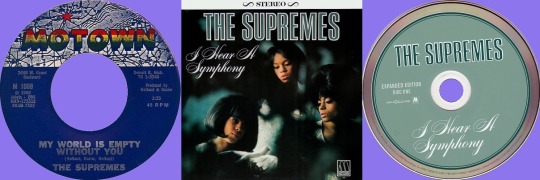
The Supremes - My World is Empty Without You (1965)
Holland–Dozier–Holland
from:
"My World is Empty Without You" / "Everything is Good About You" (Single)
"I Hear a Symphony" (LP)
Baroque Pop | Motown | Soul
JukeHostUK
(left click = play)
(320kbps)
Personnel:
The Supremes:
Diana Ross: Lead Vocals
Mary Wilson: Backing Vocals
Florence Ballard: Backing Vocals
Studio Musicians:
The Funk Brothers:
Mike Terry: Baritone Saxophone
Joe Messina: Guitar
Jack Ashford: Vibraphone
Earl Van Dyke: Organ
James Gittens: Piano
James Jamerson: Bass
Benny Benjamin: Drums
The Detroit Symphony Orchestra:
Strings
String Arrangements by Paul Riser
Produced by Brian Holland / Lamont Dozier
Recorded:
@ Hitsville U.S.A. (Studio A)
in Detroit, Michigan USA
1965
Single Released:
on December 29, 1965
Album Released:
on February 18, 1966
Motown Records
+++ +++ +++
In Memory of Lamont Dozier
14 notes
·
View notes
Text
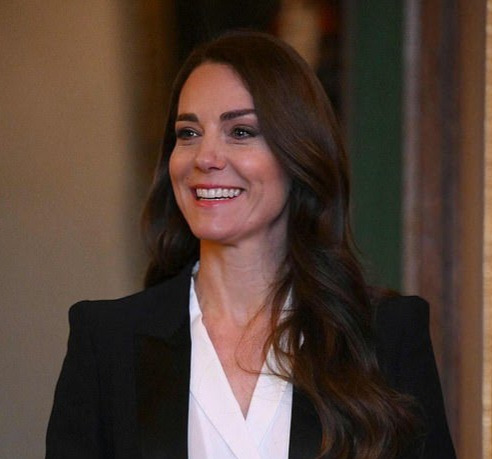

CATHERINE'S STYLE FILES - 2023
25 JANUARY 2023 || The Princess of Wales met with the Early Years Advisory Group created to offer strategic advice her and provide oversight of the work of her Royal Foundation Centre for Early Childhood at Windsor Castle.
Catherine opted for -
Shirt Bodysuit in White from Holland Cooper
Tuxedo Jacket in Black by Alexander McQueen
'Axon' Side Zip Wide Leg Pant in Black from Roland Mouret
Chunky Knot Baroque Pearl Earrings by Shyla
#catherines style files#style files 2023#british royal family#british royals#royalty#kate middleton#brf#royals#catherine middleton#duchess of cambridge#royal#british royalty#royal fashion#fashion#style#lookbook#mine.#holland cooper.#alexander mcqueen.#shyla london.#catherine in shyla london#catherine wearing shyla london#roland mouret.#25.01.2023#early years advice session 23
33 notes
·
View notes
Text
Oh btw, for anyone looking something short and sweet (?) or rather gothic and pondering on the power of art/the skewed perception the artist has on their work, Balzac’s non comedie humaine historical short story The Unknown Masterpiece is a really effective look into that. Also interesting take on the three ages of man theme here as well… the baroque holland setting is very nice as well. And I love the cynical old man looking like a frameless Rembrandt (and imo, like Death)
6 notes
·
View notes